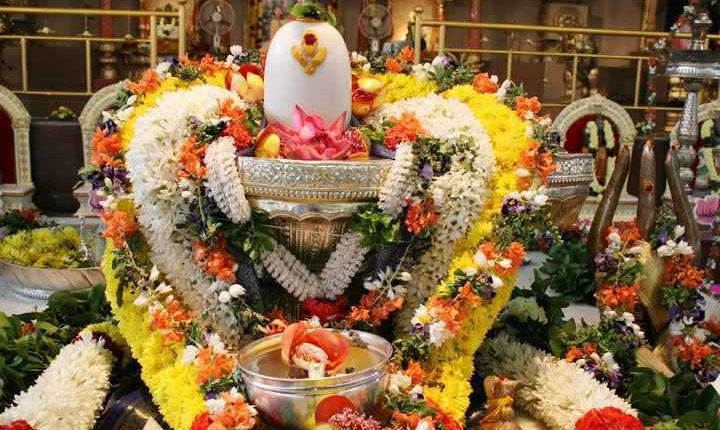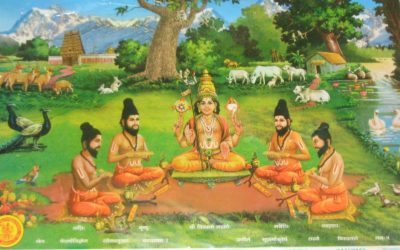All that exists is energy. This is a proven fundamental law of science today. Continuing on this premise, all events occur in the relativistic arena of space and time created when this totality of energy manifests as multiple incidences of matter. This understanding brings us closer to the concept of ‘Oneness’ of existence, at least, in the physical existence. The Vedic seers, who in Samadhi (superconscious state) were able to transcend the physical realm, proclaimed that the true nature of existence is omnipresent consciousness. This Cosmic consciousness which pervades all that exists, both manifest and unmanifest, is referred to as the Brahman, which is beyond form and formlessness.
Isavasyam idam sarvam meaning “God pervades everything that exists.” – Isa Upanishad
This advaitic (non-dualistic) truth is a fundamental understanding in Hinduism. The ‘Created’ is not separate from the ‘Creator’ or even the Act of Creation. Also the Cosmic consciousness itself can assume a form (Avatar) or it can be invoked into an inanimate idol through a process called prana prathishta. This understanding allows for worship of God through devotion to a form and through meditation on the cosmic consciousness. Realization of the cosmic consciousness in form or formlessness is the purpose of all spiritual seeking and Life itself.
In Semitic religions, the ‘Created’, which included humans and inanimate object, is separate from and inferior to the ‘Creator’, hence, it is prohibited from being used to represent the ‘Creator’ because it can never rise up to the same status as the ‘Creator’. The difference in approach towards the nature of the cosmic consciousness and the manifested reality naturally leads to a diametrically opposite reaction to the idea of deity worship.
We identify ourselves with a name and form. We relate and identify others by their name and form. To take an extreme example, a common mother would not be able to relate to her child normally if it kept changing its form even if we were to prove that the child had the same conscious identity. As long as the seeker is in the realm of identifying with name and form, it would be difficult to relate with a formless entity or an entity beyond form and formlessness.
Deity worship provides the most effective technique to bridge the connection with the Cosmic consciousness at the early stages of seeking. The deities, along with a concrete persona identified by the idol, also represent higher ideals or powers. For example, one of the ideals of Lord Ganapathi is auspicious beginnings and perseverance to the goal during hardships, and Goddess Laxmi represents abundance in all facets of life. The Hindus have the freedom to choose their ishta devata (favourite deity) based on the life affirmative ideals that they hold highest. As the seeker matures in his/her spiritual seeking, the ideals may change to more subtler forms and he/she has the freedom to change the ishta devata. This allows a beautiful pathway for Hindus to self-realization of the cosmic consciousness.
The subjective reality that the seeker believes in during his/her rise in spiritual pursuits to a more matured cognition is respected in Hinduism. This provides a compassionate environment in which the spiritual seeker flowers into full realization. This accommodative spirit can be called Vedic secularism. There are numerous examples of spiritual seekers such as Meerabai, Sri Ramakrishna Paramahamsa and others, who realized bhava and savikalpa samadhi (spiritual communion) with their ishta devata through deity worship. The path of deity worship is a celebration of life-infusing bliss into the devotees. One should visit any traditional Hindu temple to experience this directly.
All journeys start from where we are now. In the journey of spiritual realization, we begin at the stage where we need a form and name to cognize and relate. Deity worship is not only necessary but the inevitable bridge that will guide us in the purpose of our life through the journey of realizing the ultimate, which is the cosmic consciousness.
References-
1) The Teachings of Paramahamsa Nithyananda on Isa Upanishad (www.Nithyananda.org).
2) Talks by Dr. N Gopalakrishnan on Idol worship (www.IISH.org).





0 Comments